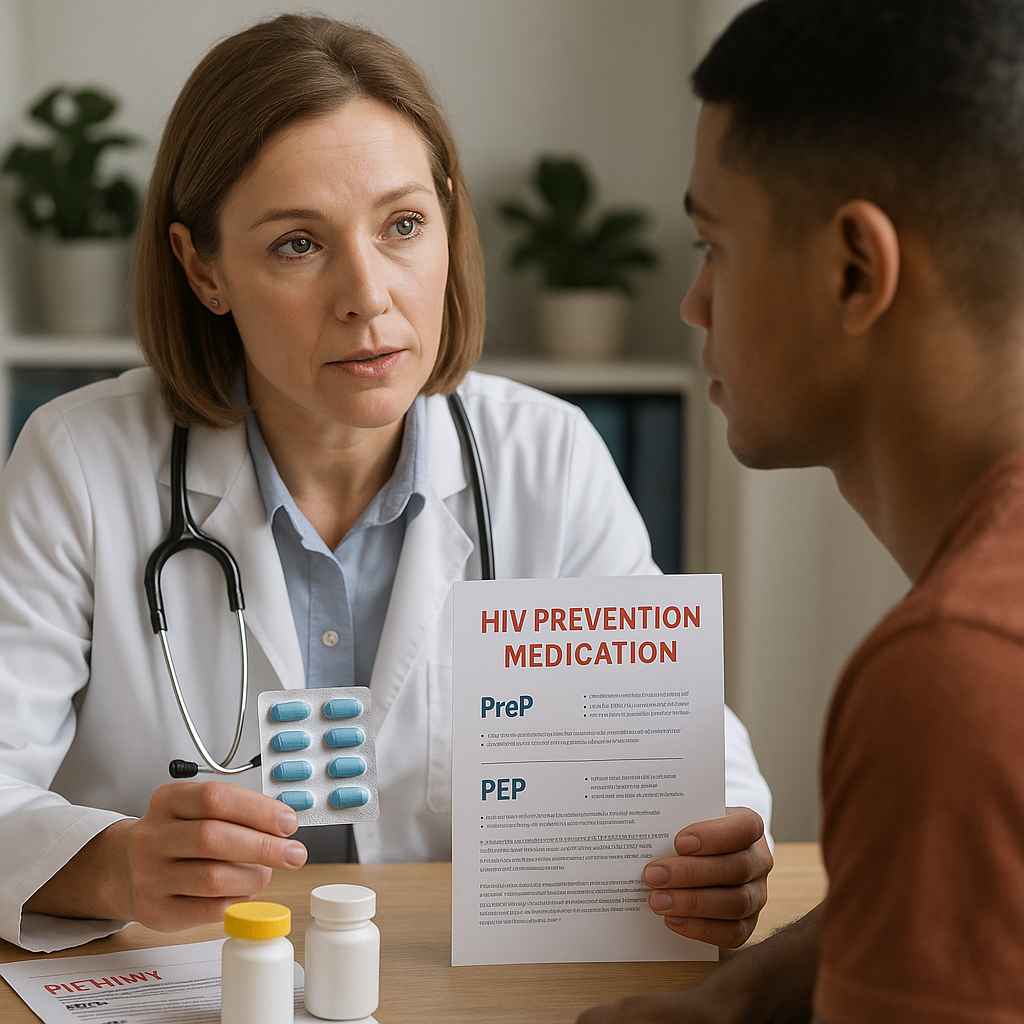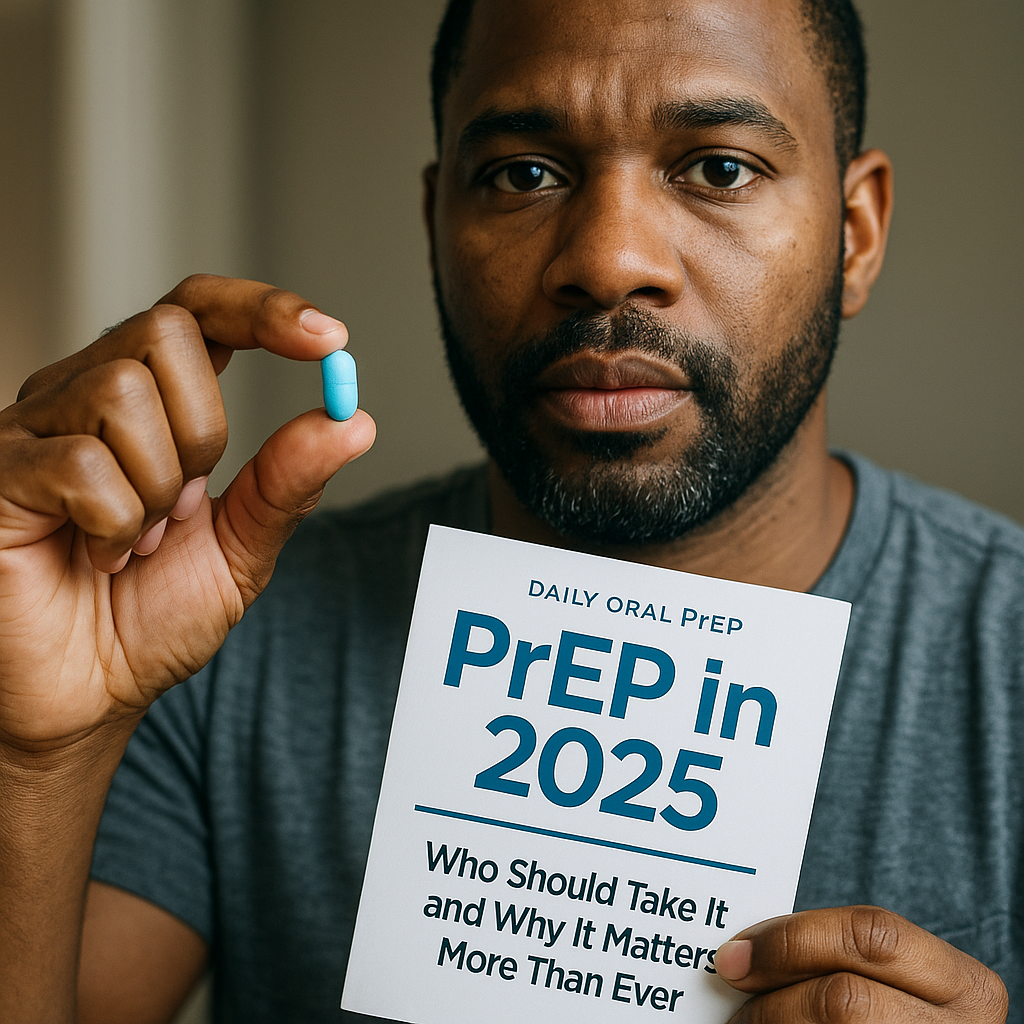
What if one pill a day could protect you from HIV? Thanks to modern medicine, HIV prevention medications are not only real—they’re reshaping public health and empowering people to take control of their sexual wellness.
Although HIV awareness has improved, misconceptions still cloud the public’s understanding of prevention strategies. Some people don’t know these options exist, while others misunderstand how they work or who they’re for. However, the truth is that HIV prevention medications have significantly reduced new infections among high-risk populations. When used correctly, they offer a powerful layer of protection.
This article takes a closer look at HIV prevention medications, how they work, and why they matter for individuals and communities alike.
Table of Contents
- What Are HIV Prevention Medications?
- Understanding PrEP: Daily Protection Before Exposure
- What to Know About PEP: Emergency HIV Prevention
- Access, Cost, and Who Should Consider It
- Conclusion and FAQs
What Are HIV Prevention Medications?
HIV prevention medications are pharmaceutical interventions used to reduce the risk of acquiring HIV. These medications work by blocking the virus’s ability to establish an infection in the body.
There are two primary types:
- PrEP (Pre-Exposure Prophylaxis): Taken before potential HIV exposure.
- PEP (Post-Exposure Prophylaxis): Taken after a potential exposure within a specific timeframe.
Unlike condoms or abstinence, which are behavior-based prevention methods, these medications provide a biomedical defense. However, they are most effective when used in combination with safer sex practices, such as regular testing and condom use.
HIV prevention medications are FDA-approved, well-researched, and endorsed by the CDC and World Health Organization. Popular brand names include Truvada, Descovy, and Apretude—each tailored to different user needs and health profiles.
You can learn more about the types of HIV prevention tools on AIDS.org’s blog, where new developments and patient stories are regularly featured.
Understanding PrEP: Daily Protection Before Exposure
Pre-exposure prophylaxis, or PrEP, is a daily medication taken by HIV-negative individuals to prevent infection if they are exposed to the virus.
PrEP works by maintaining high levels of antiretroviral drugs in the bloodstream. These drugs block the virus from replicating and establishing itself in the body. When taken consistently, PrEP reduces the risk of getting HIV through sex by about 99%. For people who inject drugs, it reduces risk by at least 74%.
Two commonly prescribed oral PrEP medications include:
- Truvada: Approved for all sexes and genders; suitable for vaginal and anal exposure.
- Descovy: Approved for men and transgender women who have sex with men; not yet approved for receptive vaginal sex.
In 2021, the FDA approved Apretude, a long-acting injectable form of PrEP given every two months. This option is ideal for individuals who struggle with daily pills or want greater convenience.
PrEP is recommended for:
- People with HIV-positive partners
- Individuals with multiple sexual partners
- Those who don’t always use condoms
- People who inject drugs
- Sex workers
However, eligibility should be discussed with a healthcare provider. Find qualified professionals via Healthcare.pro for personalized consultations.
Despite its effectiveness, PrEP does not protect against other STIs or pregnancy. Therefore, combining PrEP with condoms and regular STI screening is the best approach.
What to Know About PEP: Emergency HIV Prevention
While PrEP is taken proactively, PEP—post-exposure prophylaxis—is an emergency medication used after potential HIV exposure.
PEP must be started within 72 hours of possible exposure. The sooner it begins, the better it works. This 28-day course of antiretroviral therapy (ART) is designed to stop HIV before it takes hold in the body.
PEP is typically recommended for:
- Individuals who had unprotected sex with an HIV-positive or unknown-status partner
- Healthcare workers exposed to HIV via needlestick injuries
- Victims of sexual assault
- People who shared needles
Like PrEP, PEP includes combinations of drugs that block viral replication. Common regimens include Truvada + Tivicay (dolutegravir) or Truvada + Isentress (raltegravir). These combinations are chosen for their potency and tolerability.
PEP is not a substitute for PrEP. It’s meant for occasional emergency use, not regular prevention. Individuals with repeated exposures may be better served by starting a PrEP regimen.
After completing PEP, follow-up testing is essential to confirm HIV status and assess the need for ongoing protection. You can read more about emergency protocols and support services at AIDS.org’s FAQ page.
Access, Cost, and Who Should Consider It
Although HIV prevention medications are highly effective, access remains a concern for some communities. Cost, stigma, and lack of awareness often stand in the way.
The good news is that many insurance plans, including Medicaid and Medicare, cover PrEP and PEP. Pharmaceutical companies also offer patient assistance programs to reduce out-of-pocket costs. Additionally, public health clinics and LGBTQ+ centers often provide PrEP services at little to no cost.
PrEP is not only for men who have sex with men, despite that group being the most studied. Cisgender women, transgender people, heterosexual couples, and young adults are all candidates based on their behavior and risk exposure.
However, HIV prevention isn’t just about individuals. It’s a public health strategy. When more people use PrEP, overall community viral load goes down, helping prevent outbreaks and reduce healthcare costs long-term.
Furthermore, routine education and outreach help dispel stigma. For example, when providers explain that taking PrEP is like using sunscreen or wearing a seatbelt—just a smart precaution—it encourages adoption.
To stay up to date on evolving policies, including access and insurance coverage, explore trusted sources like the CDC’s HIV resource portal or follow updates through the AIDS.org blog.
Conclusion and FAQs
HIV prevention medications have changed the game. With the right knowledge and access, nearly everyone has the tools to protect themselves and their partners.
Whether you choose daily PrEP, emergency PEP, or are just exploring your options, these medications represent a vital step toward ending the HIV epidemic. Their power lies not just in science, but in awareness, acceptance, and proactive care.
FAQs
Is PrEP safe to take long-term?
Yes. PrEP is generally safe with minimal side effects. Regular follow-up with a healthcare provider ensures it remains a good fit for your health.
Can teenagers use HIV prevention medications?
Yes. PrEP is FDA-approved for adolescents weighing at least 35kg (77 pounds) who are at risk for HIV.
Do I need to take PrEP every day for it to work?
Daily adherence is key for optimal protection. There are also injectable options like Apretude for those who prefer less frequent dosing.
What if I miss a dose of PrEP or PEP?
For PrEP, take the missed dose as soon as possible. For PEP, adherence is critical—missing doses may reduce effectiveness. Consult your provider if you’re unsure.
How do I talk to my doctor about HIV prevention?
Be direct and open about your concerns or behaviors. Providers are trained to support you without judgment. Use tools like Healthcare.pro to find HIV-aware clinicians.
Disclaimer
This content is not medical advice. For any health issues, always consult a healthcare professional. In an emergency, call 911 or your local emergency services.



